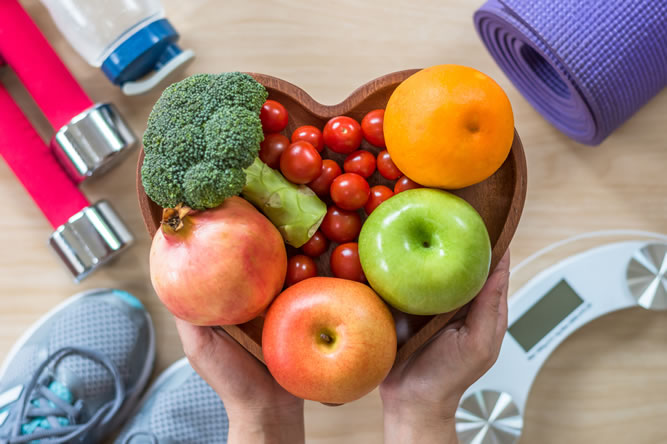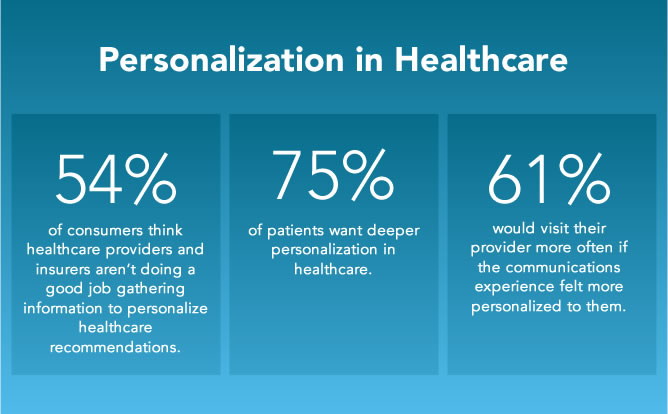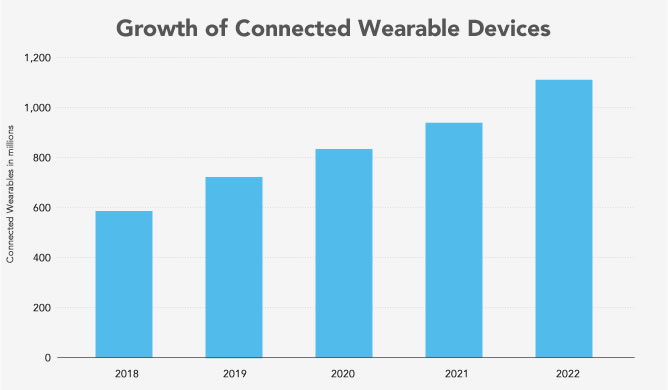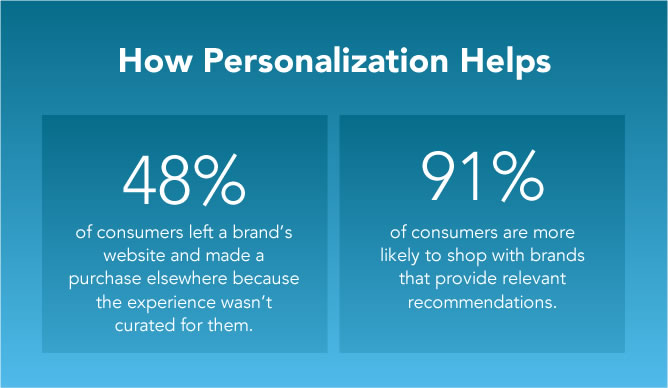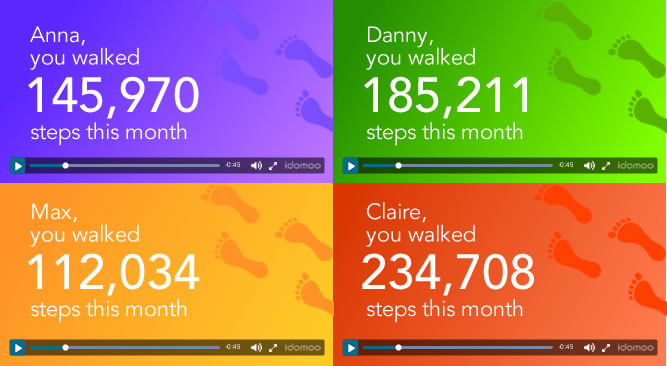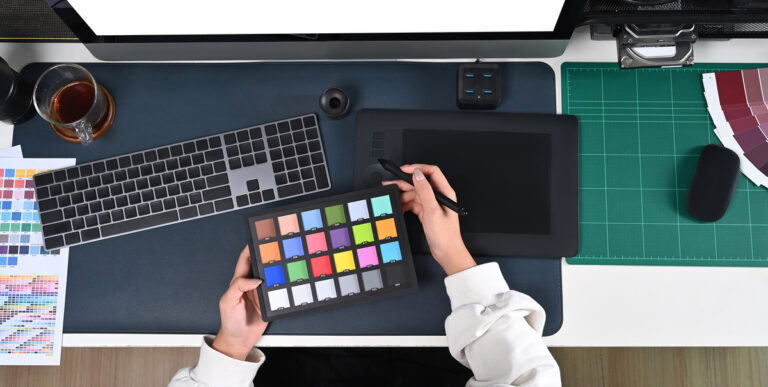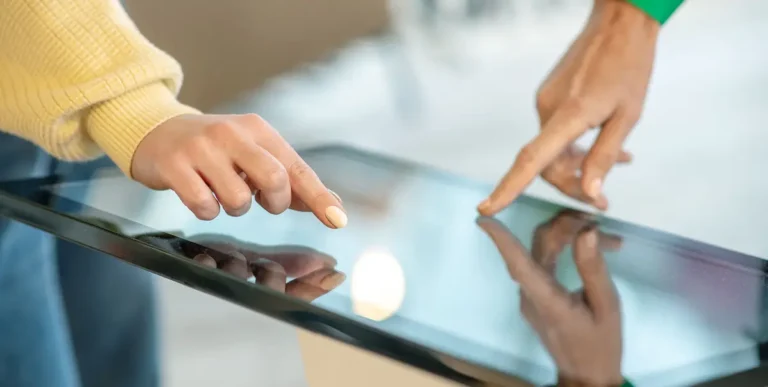Personalisation is no longer an option when it comes to customer communications. Research shows that 80% of consumers are more likely to buy from brands that offer personalised experiences. And personalisation is especially important in the health and wellness industry.
Whether you’re a gym, a doctor’s office or a health insurance company, your customers already expect 1:1 attention. This is about their health, after all. Every touchpoint, from the front office to a bill explainer, needs to make that person feel like you know and understand their individual needs.
Take a look at these results from a recent survey.
The takeaway is clear: Healthcare and wellness companies need to do a better job of personalising customer interactions. Here are the 6 trends you need to know that are reshaping personalisation in healthcare and wellness at every stage of the customer journey.
1. Virtual Wellness Experiences
We’re increasingly seeing physical spaces become digitized, particularly during the COVID-19 pandemic. Virtual fitness companies, on-demand wellness programs and telehealth appointments are fast becoming the norm. A McKinsey survey revealed that consumer adoption of telehealth jumped from 11% in 2019 to 46% in 2020.
But there’s a problem. Digital experiences can often come across as impersonal and generic. As humans, we crave a real, person-to-person connection that’s hard to replicate online.
Personalisation bridges the gap, giving online interactions a human touch. Here’s what that might look like in a virtual health and wellness setting:
- A celebratory, personalised GIF when your customer reaches a health milestone
- A virtual workout class that offers individual feedback on form and effort during exercises
- An interactive video with links to the patient portal for lab results or visit summaries
2. Wearable Tech
Wearable tech increases the availability of data, making personalisation that much easier. When data is captured in real time, the natural next step is to provide actionable tips and info tailored to each user.
And the use of on-the-go wellness technology is growing, especially among Gen Z and millennials. In one survey, over half of all respondents in this demographic said they use wearable tech or a mobile app to help manage their lifestyle and healthcare.
What’s the big draw? The individualised data provided through the technology.
For example, consider how Fitbit updated their app for better personalisation and an improved customer experience. The app lets users easily log relevant data throughout their day. Based on that data, insights, messages and suggestions appear at the top of the screen to boost well-being. This is health and wellness personalisation in action at its best.
3. Personalised Videos
The secret is out about video. It’s the most popular form of content on the internet. And it’s effective. Viewers retain 95% of a message when it’s delivered using video compared with text. It’s also the preferred medium among younger internet users. Just look at the rise of TikTok.
How does that fit into personalisation? There are a couple important factors.
Videos personalised with data make complex topics easier to understand.
What’s more complicated than healthcare? Unless you’re a specialist in the field, it can be challenging to understand all the nuances that go into taking care of your overall well-being.
Video reduces confusion and cuts the fine print no one reads. From bill explainers to personalised customer onboarding videos, you can share exactly what your customer or patient needs to know in a format they’ll actually pay attention to.
For example, the National Health Service of England wanted to support people with Type 2 Diabetes in meeting their wellness goals through a personalised care planning service. To help, they sent out Personalised Videos that simplified complex information like test results and provided clear, personalised guidance based on the viewer’s needs.
Data-driven videos can motivate and inspire viewers.
This is all the more important for healthcare organisations.
A personalised recap video can show someone where they’ve been and encourage them to continue improving on their wellness journey. Using data, you can add their specific milestones to create something unique for every individual.
Take this campaign from Orangetheory Fitness as an example. They were able to send personalised highlight reels to customers at scale by using data-driven video. For a truly innovative twist, they even personalised the music based on the customer’s workout heartbeat.
4. Chatbots That Are a Little Bit Smarter
Chatbots are a great way to connect with current or potential customers to answer their questions and engage them one-on-one. The recent State of Conversational Marketing report showed that chatbots are the fastest-growing brand communication channel. It’s true — customers are already starting to expect chatbot communication from their favourite brands.
But the key to making this tool effective is personalisation, putting a face on your chatbot, if you will.
With data-driven video, you can create a chatbot experience that goes beyond text output and is still hyper-tailored to every customer. This is key for the wellness industry, where customer care is highly individualised based on personal health needs and goals.
How does a personalised chatbot work? Say a patient or customer is on the company’s website. If they’re logged in, they can talk with a chatbot to ask a range of questions. Some of these will trigger a video, generated in real time, drawing on up-to-the minute information about that customer. So the video can address the customer by name and walk them through how to access their online account and end with a reminder of their next appointment.
Imagine how great a customer service interaction like that would be for the user. That’s the kind of digital personalisation consumers are increasingly looking for.
5. Hyper-Targeted Ads
Ads tailored to individuals based on their needs, interests and past behavior are everywhere. Amazon is the classic example. You see product recommendations based on items you’ve already viewed.
But we know that a personalisation technique as simple as targeted recommendations have a big impact.
Personalised ads are nearly twice as powerful as generic ones. Note that personalisation doesn’t have to be creepy — “Hi, John, try this low-carb meal kit for your family of 3. Even your daughter, Sarah, age 6, will love it!” But it should be relevant.
One of the most effective ways health and wellness brands can get started with personalised advertising is by tapping into the wealth of data available on social media. For example, you can combine Facebook’s algorithm-rich ad model with data-driven video to instantly increase the effectiveness of your ad. These Dynamic Video Ads deliver a 5x uplift in CTR compared to generic video ads.
Here’s a dynamic ad example from another industry.
By leveraging videos that are truly dynamic — able to automatically sub in different scenes based on consumers’ behavioral and demographic data — you’re making your offer more relevant and more relatable. It’s in the context of what they care about.
Beyond social media, we’ve seen companies use personalised quote videos as another avenue for customer acquisition. If you’re advertising health insurance, your future customer can enter their requirements directly into the video and then watch it update in real time with a quote just for them. This kind of tailored advertising cuts through the digital noise, driving up conversions.
6. Loyalty Programs to Boost Retention
Loyalty programs are a boon when it comes to reducing churn: 84% of consumers say they’re more likely to stick with a brand that offers a loyalty program. When handled properly, they do more than just help you keep customers — they turn your biggest fans into true brand advocates.
Sadly, most loyalty programs today aren’t doing this. Why? A lack of personalisation is a big part of it.
Only 2 in 10 loyalty program members say they’re very satisfied with the level of personalisation their program provides. Think about it. This isn’t your average customer. It’s someone who’s spent a lot of time with you, invested in the relationship. If you communicate with them in generic terms, without the emotional appeal and relevance of personalisation, are you showing them you understand their needs?
In the wellness space, ways to personalise a loyalty program might include:
- A points system where consumers earn points based on workout completion and consistency
- Giving each customer their own personalised referral code to share with friends
- A motivational year-in-review video recapping their biggest achievements
As one example, see how WW (formerly Weight Watchers) motivated their customers to keep moving with a personalised year in review.
The great thing about personalised recap videos is that they summarise an individual’s activity, letting them see high-level trends and understand their past performance. Better yet, it’s fun to watch — and also fun to share on social media, inspiring their friends to join in.
Personalised rewards are another great way to delight your loyal customers. A tiered rewards system could offer personalised prizes such as:
- A discount on the customer’s next purchase
- Branded merchandise the customer has expressed interest in
Finally, Health and Wellness Gets Personal
Creating personalised experiences for each of your customers might seem like too much time and effort. But it’s worth the extra effort.
The first step is getting to know your customers. Who are they? What do you know about them? (That is, what data do you have about them?) How can you use that data to provide better customer service, clearer explanations of healthcare options, surprises that boost retention and more?
Once you know who your customers are and what they want, you’re ready to create content that serves them and meets their needs. From chatbots to data-driven video, make your digital interactions personalised, human and engaging, and you’ll be making life just a little better for your customers — and isn’t that what working in health and wellness is all about?
If you want to know how to combine personalisation with video at scale, even if you have thousands or millions of customers, click below to schedule a call. We’d love to show you how it works.
